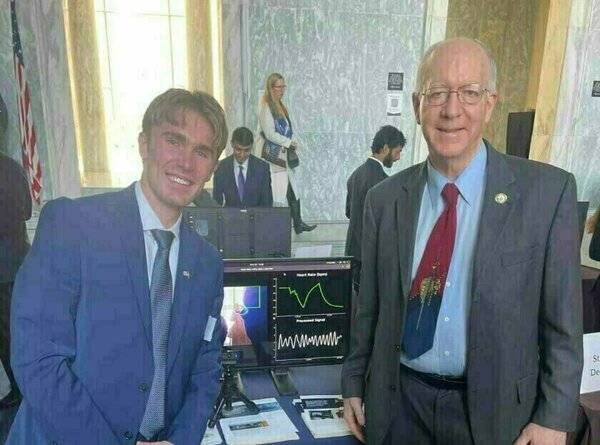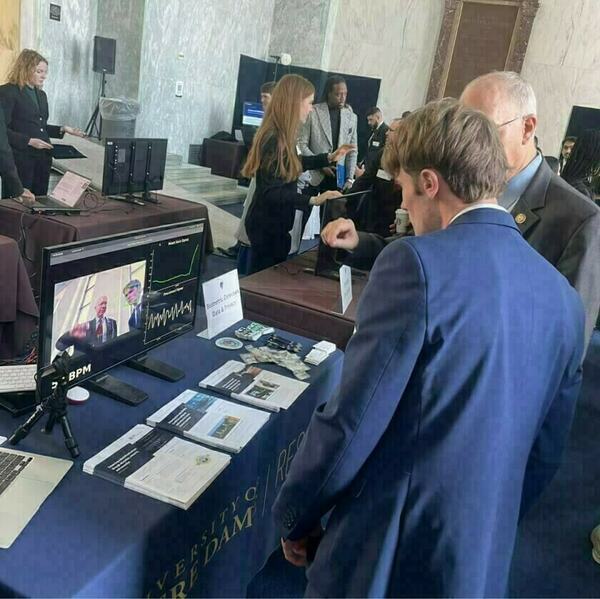
University of Notre Dame researchers showcased an innovative AI tool capable of remotely detecting real-time heart rate and vital signs through facial video on Capitol Hill last month. The demonstration underscored both the tool’s vast potential benefits and the need for federal oversight to ensure responsible AI development and deployment.
Notre Dame Computer Science and Engineering Ph.D. candidate Colton Crum presented the tool at the Center for AI Policy’s Congressional Exhibition on Advanced AI on February 24. Capable of accurately detecting a person’s vital signs from over 70 yards away — or the width of a football field — by analyzing video footage of their face, this tool developed by a team of Computer Science and Engineering researchers offers far-reaching applications in healthcare, infectious disease monitoring, identity security, and transportation safety.

Crum demonstrated the tool for Members of Congress and their staff, including Congressman Bill Foster (D-IL), a Ph.D. physicist and AI enthusiast. The exhibition highlighted both the promise and risks of advanced AI, helping congressional leaders grasp the importance of robust evaluation, guardrails, and transparency measures to prevent potential misuse.
The Notre Dame research team that developed the AI tool includes University of Notre Dame Ph.D. students Jeremy Speth and Nathan Vance, University of Notre Dame undergraduate student John Provine, and advisors Patrick Flynn, the Fritz Duda Family Professor of Engineering in the Department of Computer Science and Engineering and Adam Czajka, associate professor in the Department of Computer Science and Engineering and director of the AI Trust and Reliability Lab at the University of Notre Dame.
Learn more about Notre Dame’s interdisciplinary research in artificial intelligence at the Lucy Family Institute for Data & Society.
Originally published by Irene Levering at washingtonoffice.nd.edu on March 18, 2025.